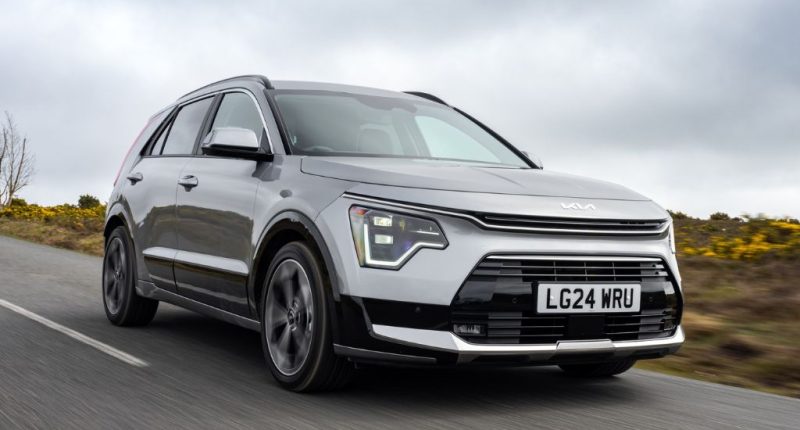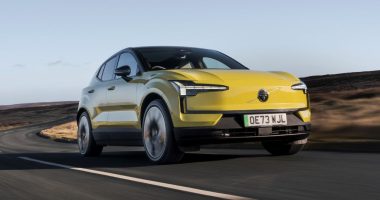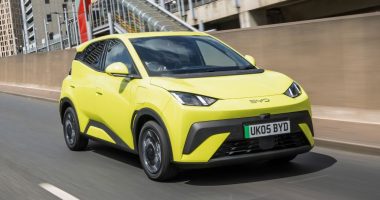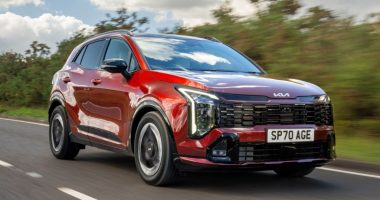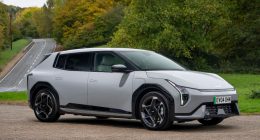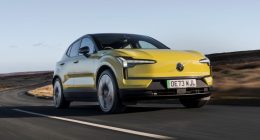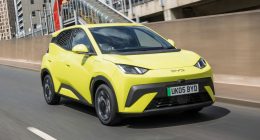For some time now the Kia Niro has been a steadfastly popular choice for families who really value design, comfort and, above all else, practicality. Low running costs has also been an ace in the pack, especially for this new model, with pure petrol examples promising returns in the low- to mid-40mpg. There is also a battery option which, despite not offering world-beating range, is still capable of covering 260-miles from a full charge of its 64.8kWh lithium-ion pack.
Even though calls for planet-friendly motoring grow louder by the day, making the transition from internal combustion engine (ICE) to full electric in a single jump is still too big for buyers, despite most car manufacturers rolling out increasingly attractive finance packages and offers That is where the plug-in hybrid comes in – a car that promises quick and easy fill ups of the 1.6-litre, four-cylinder GDi (Gasoline Direct Injection) engine – and serene driving courtesy of a front axle-mounted electric motor that allows for EV driving for distances close to 40 miles.
In terms of charging the cells in the 11.1kWh pack, Kia’s data suggests you can get from 15% to 95% using a 7.2kW AC single phase home unit in nine-and-a-half hours. Admittedly, this is not great, but the picture improves with a 22kW power source (six hours twenty minutes) – the most the Niro can handle (both 50kW rapid and 100kW high power charging is beyond it).
As with other mild hybrid and plug-in hybrid alternatives, the Niro also relies on regenerative braking to scavage what energy it can when you take your foot off the accelerator pedal and harnessing this to top up the battery. In this instance, the settings range from ‘Off’ to ‘Level 3’ and can be controlled using paddles behind the steering wheel. You do notice a graduated rise in how grabby the brakes become and while single pedal driving isn’t possible in the most extreme setting, there is barely any need to touch the brakes when out of town. It is worth mentioning that in ‘Sport’, the same two paddles give you the option to go up or down gears.
Boasting a combined 168bhp, there is adequate punch on the acceleration front – particularly at lower speeds, however, the race to 60mph does not feel any quicker than the quoted time (11.2 seconds). Switching from ‘Eco’ mode to ‘Sport’ helps somewhat, but the dim-witted, 6-speed automatic gear box is often slow to keep up with your demands and can interfere with forward progress. The Niro’s onboard software defaults to electric on start-up and when the engine kicks in to lend a hand. When it does the note is not terribly appealing, but it only ever becomes noticeable from inside the simple cabin once you begin to adopt a heavy right foot.
Another key differentiator between the Niro PHEV and its mid hybrid sibling is how noticeably hard the set-up is. Being on the firm side, the ride can take that bit longer to compose itself if unsettled by a half-hearted road repair or wavy Tarmac, and although you’ll notice a shudder in the cabin and through the controls, the ride cannot really be described as harsh. Smaller rims as opposed to our test car’s dual-tone 18-inch wheels would certainly help in this regard and, for that, the less expensive but equally well-equipped ‘2’ trim is the one to opt for. In the metal, the Niro is revolutionary looking, especially the ‘heart trace’-inspired DRLs at the front and the ‘sideblades’ that are incorporated into the C-pillars to smooth out the flow of air.
Our mid-range test car tipped the pricing scales at £37,575 though Kia has crammed in lots of equipment to sweeten the deal. Despite a head-up display and two, 10.3-inch screens which are arranged in a curved panel are reserved for ‘4’ models, the ‘3’ still boasts a not-too-shabby 10.25-inch central touchscreen with sat-nav, Android Auto and Apple CarPlay functionality, a 4.25-inch digital display in the driver’s binnacle, dual electronic climate control, automatic lights and wipers, rear privacy glass and a suite of advanced active and passive safety features. There is also a choice of seven body colours to choose from: metallic ‘Mineral Blue’ really suits the Niro’s black wing mirror caps and roof rails, and dark plastic mouldings around the wheel arches and lower half of the doors that offer a degree of protection.
Both longer and wider, the second-generation Niro can hold its own against rival SUVs when it comes to cabin stowage, passenger space, and boot capacity. Smaller than the regular car’s (451-litres versus 348-litres), the PHEV’s boot is uniform in shape, a height-adjustable floor and a foldable parcel shelf. The load lip is negligible making it easy to lift items in and out and longer objects can be moved into place easily as the 60/40 folder seats create an almost flat surface when these are folded down.
